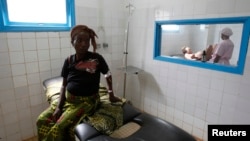Researchers tracking global rates of maternal mortality have found that the risk of a woman dying from pregnancy-related causes has been cut nearly in half over the past 25 years.
But the new report, jointly issued by The World Bank, the World Health Organization (WHO) and other U.N. agencies, also suggests very mixed and uneven results.
It shows the Millennium Development Goal of reducing maternal deaths by 75 percent by the end of this year has only been achieved by nine countries. Only two African countries — Cape Verde and Rwanda — are among them.
Lale Say, the WHO's reproductive health coordinator, says maternal deaths worldwide, which stood at 532,000 in 1990, dropped to an estimated 303,000 in 2015.
“For every 100,000 live births, there will be 216 women around the world who will die ... during 2015," Say said. "This would mean that in 2015 around 830 women are dying from pregnancy-related causes every day around the globe.”
Developing regions
Say says about 99 percent of all maternal deaths are taking place in developing regions, with Sub-Saharan Africa alone accounting for two-in-three deaths.
While that number is clearly far too high, it nonetheless represents a major improvement from the past, she says.
Say also says maternal mortality rates in Sub-Saharan Africa have decreased by 45 percent from 987 to 546 per 100,000 live births between 1990 and 2015.
Eastern Asia has made the greatest improvement, reducing maternal deaths by 72 percent over the past 25 years.
“We know why mothers die," she says. "They die from severe bleeding, from infections, complications from unsafe abortion and hypertensive disorders of pregnancy. And, we also know that most of these deaths are preventable.”
U.N. health officials say improving access to quality health care, with trained health workers on hand during and after childbirth, can save many lives. They say women and girls must be provided with contraception, safe abortions and essential medicines to treat problems that may arise.







